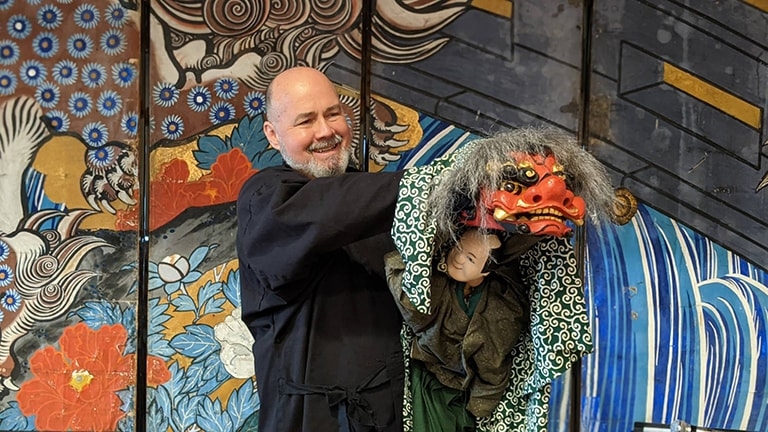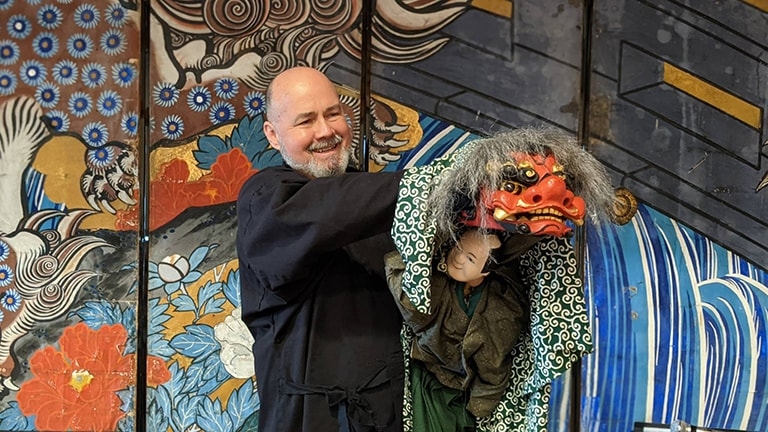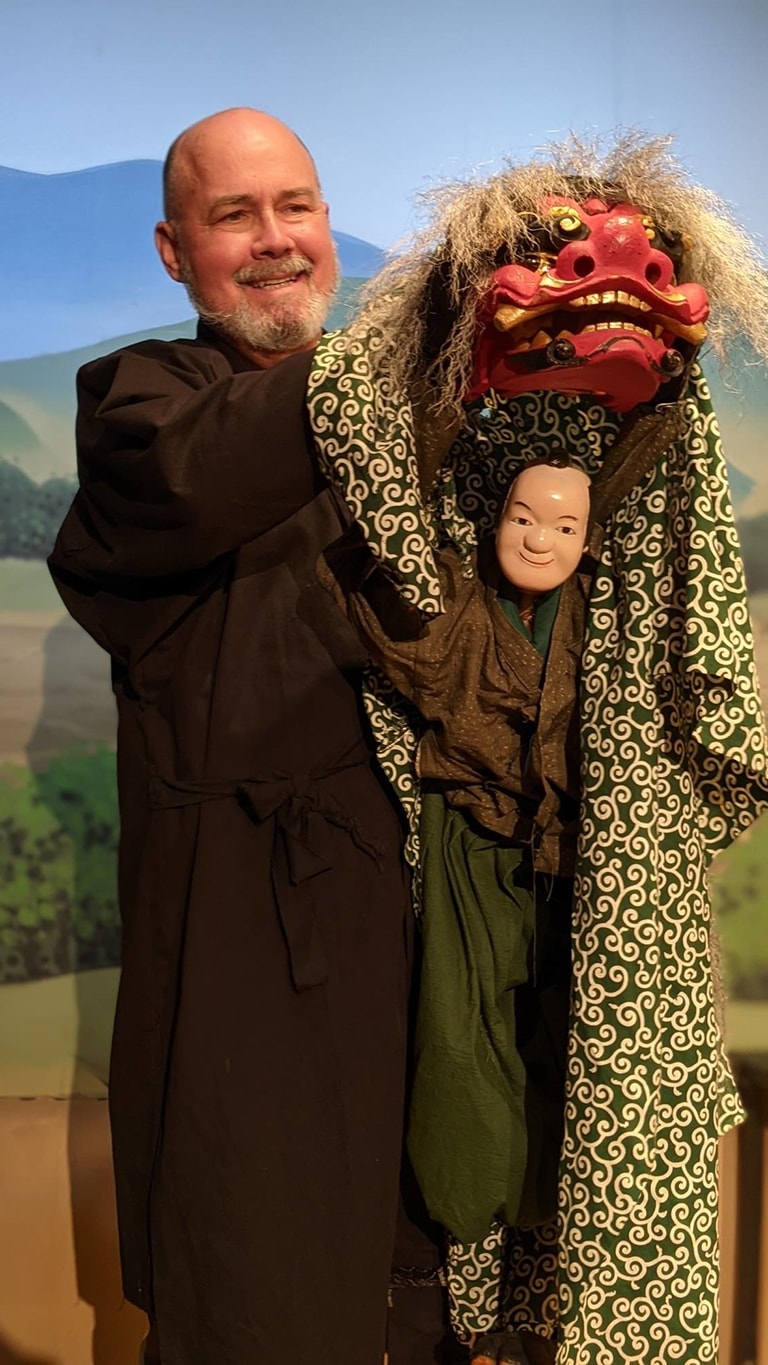Martin Holman: A pioneer in Japan's puppet theater tradition

A Tokushima tradition: Puppeteer Martin Holman says one of his favorite aspects of performing is when his puppets perform lion dances, essentially with puppets of their own. | OMAR CAMACHO
Martin Holman’s interest in puppetry started early in life.
“I’ve loved puppet theater of all kinds since I was a child,” he recalls. “The first thing I can remember asking Santa Claus to bring to me for Christmas was a marionette.”
Little did he know at the time his passion for puppets would lead him to become the first non-Japanese to train and perform in Japan as a traditional puppeteer in the style known as ningyō jōruri, which translates as a “dramatic narrative with dolls/puppets.”
In this style, each puppet is operated by three people and performances include a narrator and shamisen player. The art form later became more popularly known as “bunraku.”
After retiring from a career in academia, Holman, 63, moved to the city of Tokushima where he now lives and works with his troupe, Tokubeiza. Together they offer fresh perspectives on what’s known as Awa ningyō jōruri (Awa is the name of the region Tokushima Prefecture is located in), a tradition that grew from Tokushima’s rural communities, where it was often performed on outdoor stages to the delight of farming families. To ensure that they could easily be seen from a distance, the puppets used in it are larger than those typically found in puppet theater performed elsewhere. The prefecture has also developed a reputation for its talented puppet makers, who supply dolls to professional troupes across Japan.
Efforts over the past few decades to preserve the art form in Tokushima have also paid off; there are currently more than a dozen active puppet theater troupes. In 2019, Tokubeiza became the newest addition.

